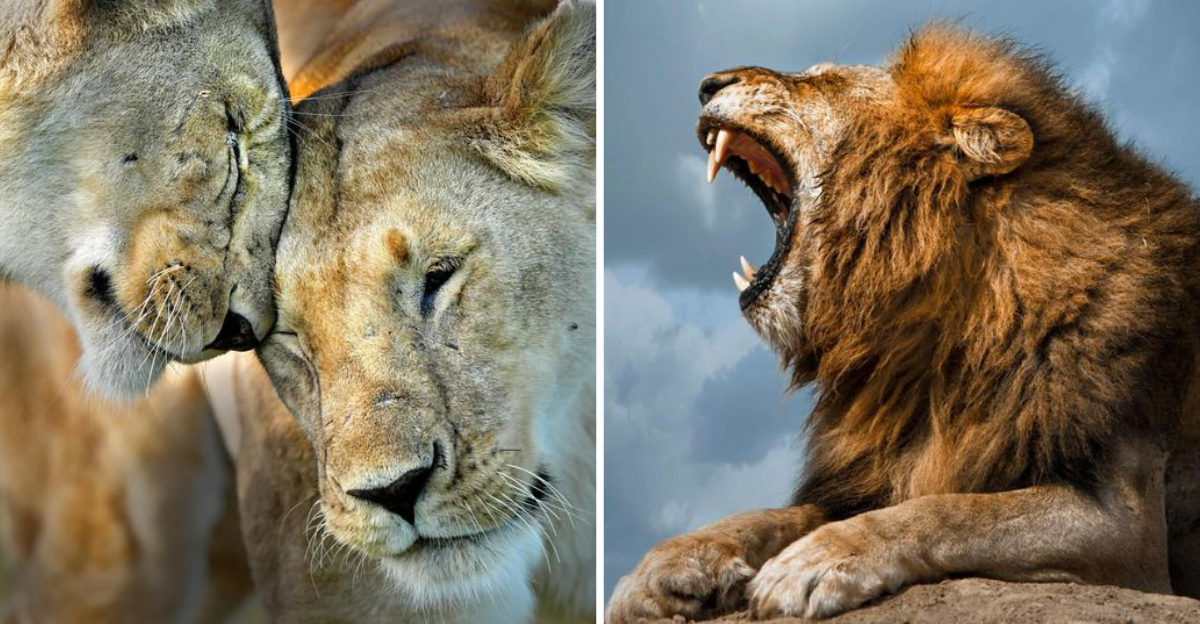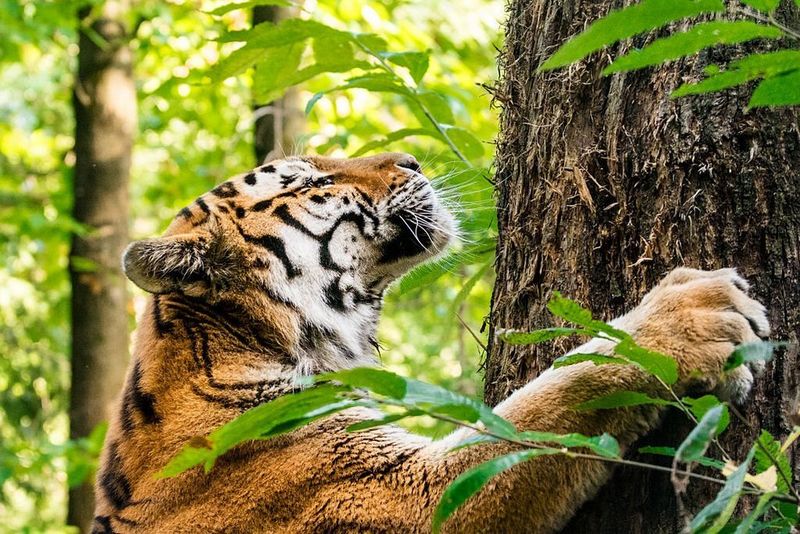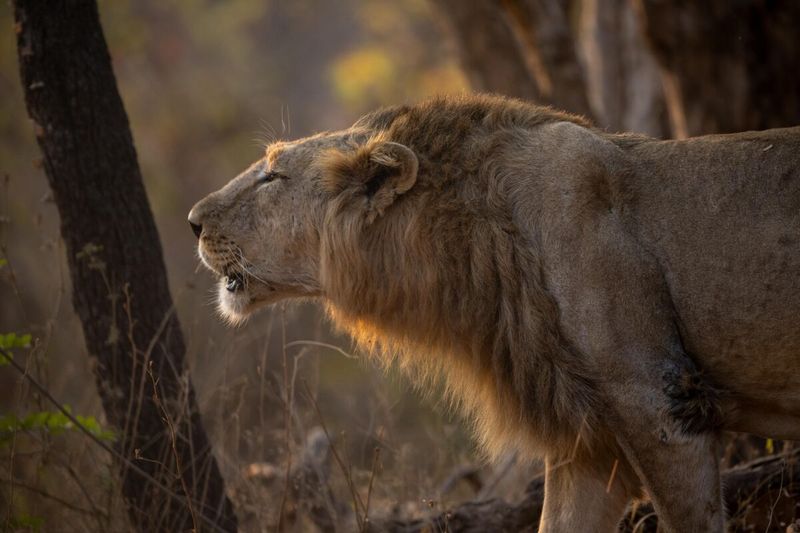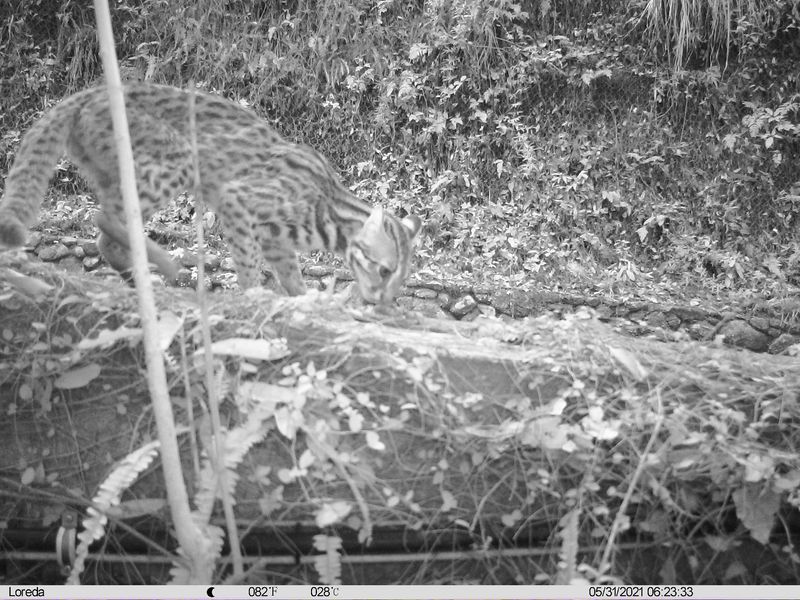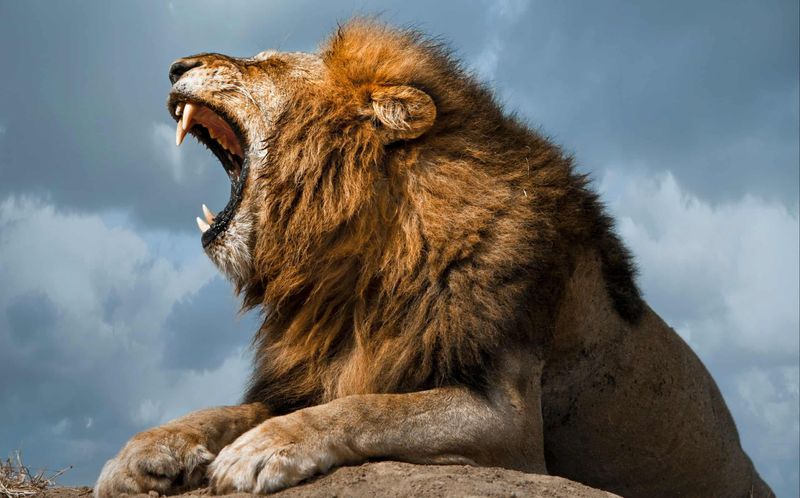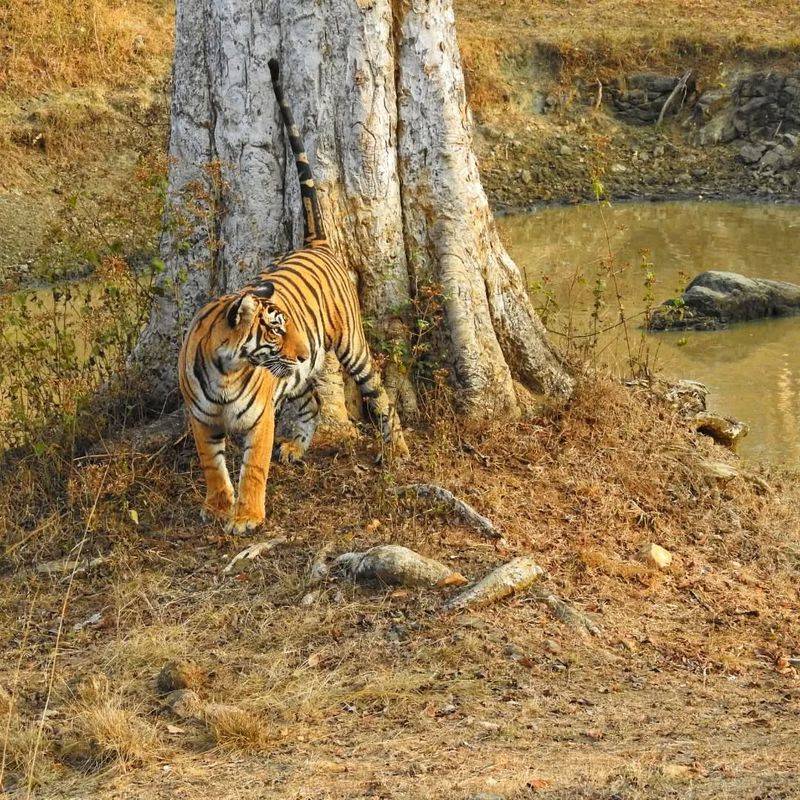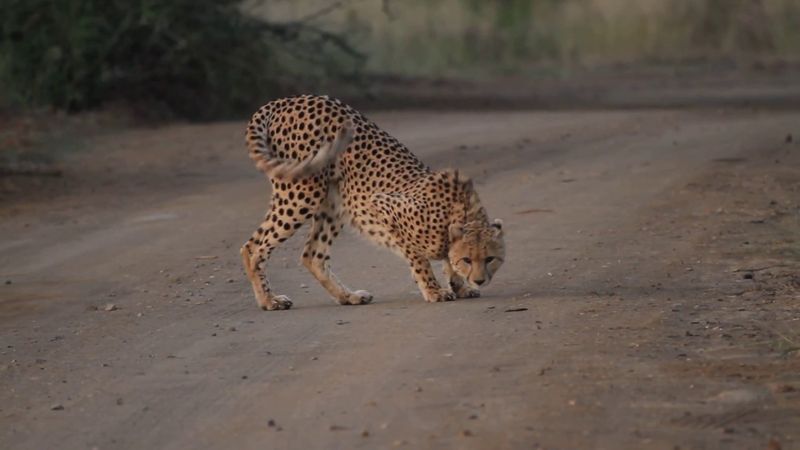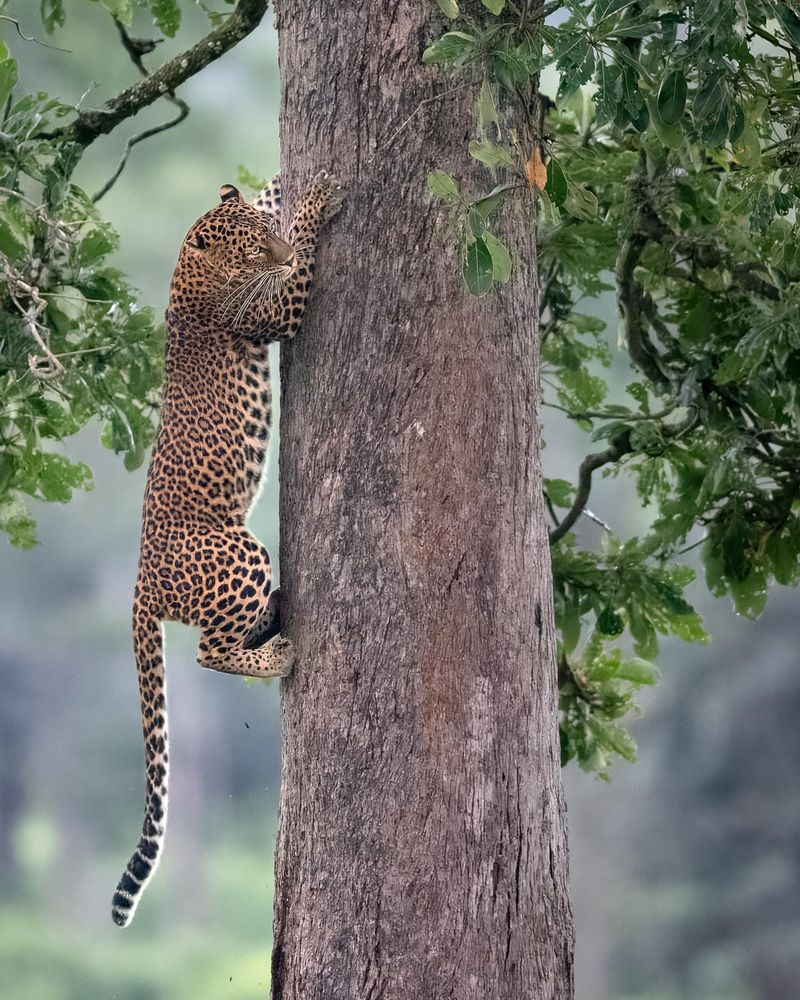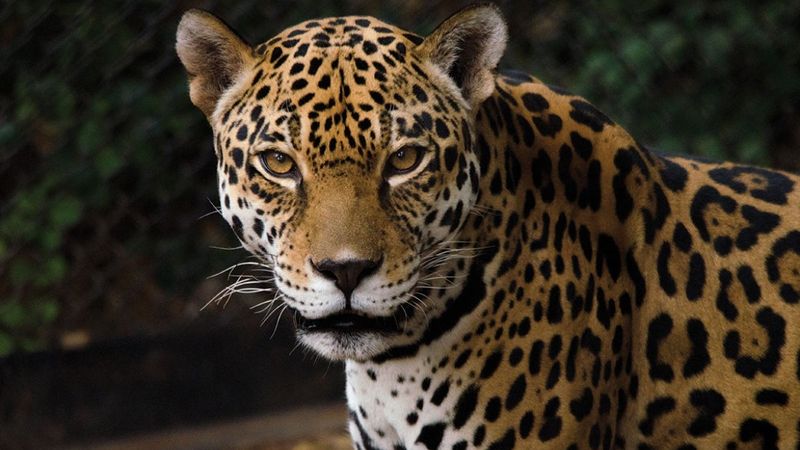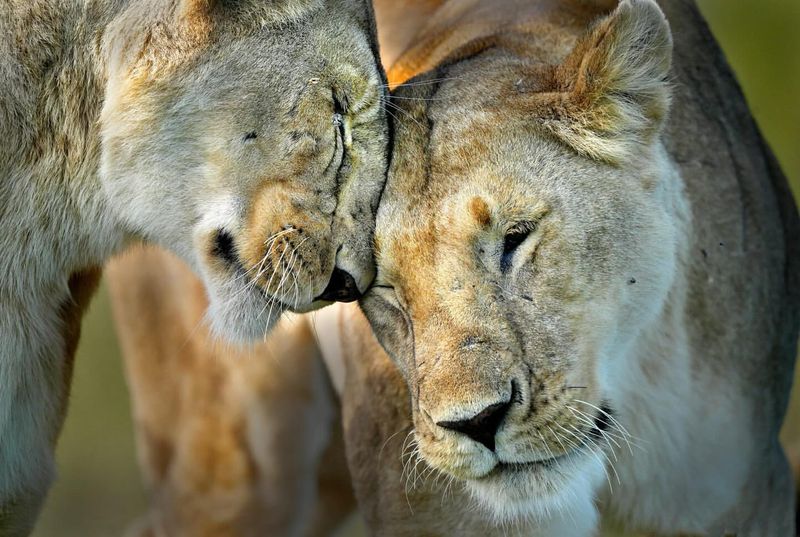📖 Table of Content:
Big cats, including lions, tigers, leopards, and jaguars, possess fascinating methods to mark territory. These behaviors are crucial for communication, dominance, and resource management. Understanding these tactics offers insight into their survival strategies and social structures.
1. Urine Spraying
With a pungent spray, a tiger claims its land. This acts as a message board, filled with information about identity and reproductive status. The scent warns rivals and attracts potential mates. Positioned strategically on trees or rocks, these markers are essential for maintaining territory boundaries.
2. Scratching Trees
A leopard’s claws etch stories on tree trunks. This behavior serves dual purposes. While sharpening claws, it also leaves both a visible and olfactory territorial marker. Other cats, sensing the scent, know the area is claimed, reducing confrontations.
3. Rubbing Objects
A lion gently rubs against a rock, leaving behind a personal signature. This behavior deposits scent from facial glands, reinforcing territorial boundaries. Other lions recognize these markers, acknowledging the presence and authority of the territory owner.
4. Defecation in Specific Locations
In the wild, a jaguar’s feces are more than waste. Positioned at strategic spots like trail intersections, they serve as both visual and olfactory signals. These markers declare ownership, ensuring other big cats recognize the claimed area and respect its boundaries.
5. Vocalizations
A lion’s roar echoes across the savannah, a powerful declaration of presence. These vocalizations serve as auditory markers, reaching distances beyond visible boundaries. They warn potential intruders and communicate dominance, ensuring the territory remains contested.
6. Clawing and Scraping the Ground
With a swift motion, a tiger scrapes the ground, leaving behind deep marks and scent. This act reinforces territorial boundaries, communicating to others the land is claimed. Such visible and olfactory signals play a vital role in reducing conflicts among big cats.
7. Rolling on the Ground
A cheetah playfully rolls in the grass, a behavior more than just fun. This action spreads its scent, mingling with environmental odors. The resulting scent map is complex, allowing the cheetah to reaffirm its territory while gathering local smells.
8. Biting Bark on Trees
With a grip of its jaws, a leopard leaves its mark by biting tree bark. This act is both a visual and olfactory marker, ensuring other cats know the territory is claimed. Such behaviors deter rivals, maintaining peace and order in the wild.
9. Leaving Prey Remains
A jaguar’s leftovers are more than just remnants. They signal prowess and presence, warning other predators of its dominance. Such remains assert territorial ownership, deterring rivals by highlighting the owner’s hunting success and strength.
10. Facial Rubbing
When lions rub faces, it’s more than camaraderie. This action deposits scent and reinforces social bonds within a pride. It marks territory communally, ensuring the group’s scent is widespread and recognized, strengthening their collective security.
